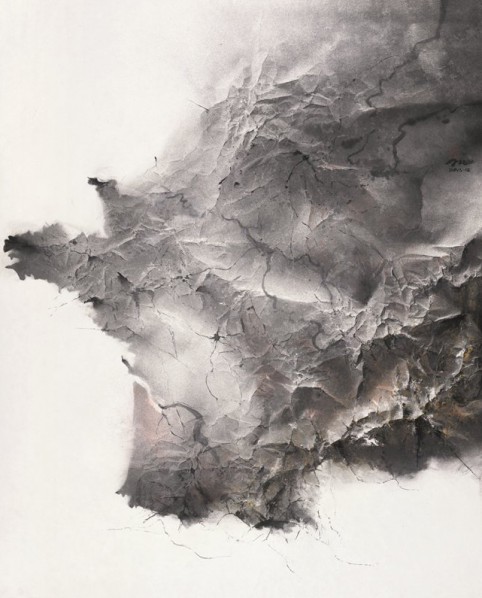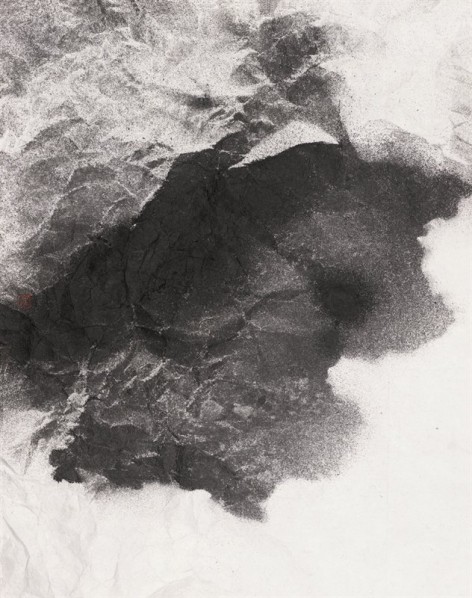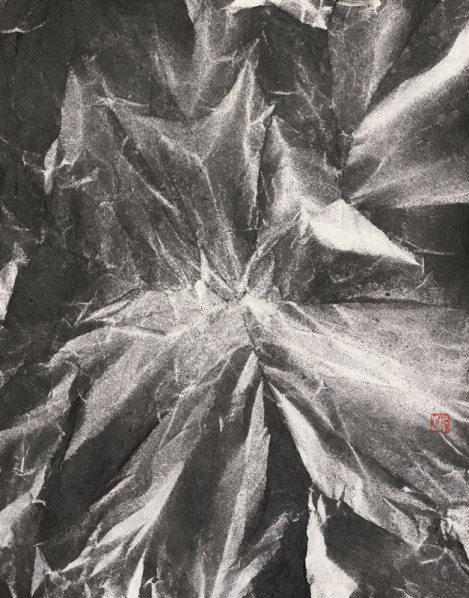
Ding Bin, Impress Series: France No.1, 1900x1530cm, Ink on paper, 2013
Strictly speaking, post-landscape paintings should not be considered as paintings, but as iconography. It is no longer the traditional landscape painting per se, rather, it rejects its former definition. Ink and brush are central to traditional landscape painting imagery, executed through the artist's spirit. In other words, it uses ink to express the values of the literati. Post-shanshui iconography has not only stopped carrying forth the values of the literati, it has also deconstructed ink painting. In recent years, there are those who have already begun to experiment in this field in China. In 2011, a contemporary Chinese art exhibition, Shanshui was held at the Lucerne Art Museum in Switzerland, and some of the artworks in this exhibition are considered as "post-landscape iconography". Today, Ding Bin has provided us with new examples of such artistic practice.

Ding Bin, Impress Series: The Alps , 1000x1450cm, Ink on paper, 2013
This exhibition marks Ding Bin's first formal solo exhibition. He studied under Jia Youfu in his earlier years, on classical landscape painting and ink painting of the new China, and was peer of Chen Pingwei, a representative painter of the "New Literati paintings" at the Chinese Painting Department of the Central Academy of Fine Art. Ding has created a large number of works on monochromatic landscape paintings. In recent years he became infatuated with experimenting cartography through ink painting. He has thus departed from traditional painting methods, and boldly adopts the overlooking perspective perpendicular to the image. In sum, his artworks are angles to cartography and representations of ink painting.

Ding Bin, Imprint No.18, 420x330cm, Ink on paper, 2013
Ding Bin's artworks are created through production methods, rather than the traditional writing and brushstrokes. Thus Ding Bin's works are iconographies rather than landscape paintings per se. It rejects both the traditional landscapes painting and landscape painting in general, thus I define it as "post-shanshui iconography". However compare to images of the landscape rendered through photography or mixed media, Ding Bin has not abandoned the material of traditional ink painting - paper and ink. He is an artist who produces the image of mountains and rivers with ink painting materials, which constitutes the significant attributes of his works. Due to the artist's familiarity of TV expressions, his works have appropriated the panoramic overview and certain methods of montage that also bring a sense of novelty to his works.

Ding Bin, Imprint No.36, 420x330cm, Ink on paper, 2013
About the exhibition
Duration: April 26 - May 6, 2014
Venue: Today Art Museum - 1st floor exhibition hall of Building No.3
Opening: April 26, 2014 15:00
Gallery Opening Hours: 10:00-18:00, Closed on Tuesday
Tel: 010-58760600
Add: Pingod community, No.32 Baiziwan Road, Chaoyang District, Beijing
Courtesy of the artist and Today Art Museum, for further information please visit www.todayartmuseum.com.




























